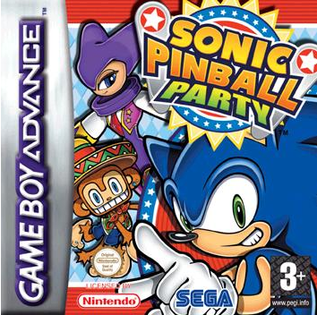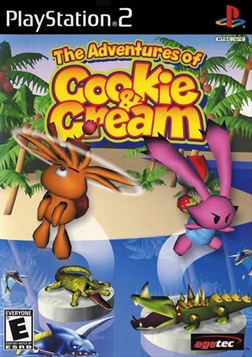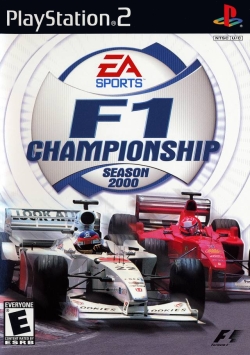
Rune is an action-adventure video game developed by Human Head Studios which was released in 2000. The game is based on Ragnarok, showing the conflict between the Gods Odin and Loki and the buildup to Ragnarok. Built on the Unreal Engine, the game casts the player as Ragnar, a young Viking warrior whose mettle is tested when Loki and his evil allies plot to destroy the world and bring about Ragnarok.

Clive Barker's Undying is a horror first-person shooter video game developed by EA Los Angeles and published by EA Games. The game's story was written by acclaimed horror writer Clive Barker. He also provided the voice of Ambrose Covenant, a character in the game.

Sega Rally 2 is an arcade racing game developed by Sega for the Model 3 arcade hardware. It is the sequel to 1994's Sega Rally Championship. The game was first released in arcades in February 1998, and was later ported to the Sega Dreamcast, becoming one of the console's earliest titles when it was released in Japan on January 28, 1999. The Sega Dreamcast version was released in Europe as a launch title on October 14, 1999, and then in North America on November 27. A PC version was released in Japan and Europe that same year, with the North American release following suit in September 2000, where it was published by Mattel Interactive.

Zeus: Master of Olympus is a single-player strategy game developed by Impressions Games and published by Sierra Studios. It is considered to be an additional installment in the City Building series of games. Like previous titles in the series, Zeus focuses on the building and development of a city in ancient times. The game features a number of changes from previous titles in the series, including being set in Ancient Greece as well as changes to certain gameplay mechanics; however, it is considered to be in most aspects very similar to its predecessor, Caesar III.

Sonic Pinball Party is a video game released for the Game Boy Advance in 2003. It is a celebration of sorts for Sonic Team featuring many references to its previous games, mostly prominently Sonic the Hedgehog, Nights into Dreams, and Samba De Amigo. There was also a release on a Twin Pack cartridge bundled with Sonic Battle and Sonic Advance respectively in 2005.

Tokyo Xtreme Racer Zero is a racing game developed by Genki for PlayStation 2. Despite its name, it is set between Tokyo Xtreme Racer 2 and Drift, and has enhanced sound and graphics. The game was released in Japan as Shutokou Battle 0, but was also a release in North America. The game was released in a PAL version in Europe and Australia under the title Tokyo Xtreme Racer.

Virtua Tennis 3, known in Japan as Sega Professional Tennis: Power Smash 3, is the second arcade game sequel to Sega's tennis game franchise, Virtua Tennis. The arcade version of Virtua Tennis 3 is powered by the PC-based Sega Lindbergh arcade system board. Ports for the PC, Xbox 360, PlayStation Portable and PlayStation 3 consoles are also available with a traditional collection of tennis minigames that the home versions of Virtua Tennis are known for. In 2009, Sega updated and re-created Virtua Tennis 3 in Virtua Tennis 2009.

Bomberman Tournament is a game in the Bomberman series for the GBA. The game contains a multiplayer battle mode between linked Game Boy Advances. The player and up to three others can compete in any of the game's eight multiplayer battle arenas, each of which has its own unique gameplay twist.

Addiction Pinball is a pinball video game developed by Team17 and published by MicroProse for Microsoft Windows in 1998. It features tables based on two Team17 games, World Rally Fever and Worms.

Star Wars: Super Bombad Racing is both a racing video game and vehicular combat game with characters from Star Wars: Episode I – The Phantom Menace, Star Wars, and Return of the Jedi. The playable characters are portrayed in a super deformed style. This game is available on PlayStation 2 only, as the Dreamcast, Windows, and Mac OS versions were cancelled due to poor sales of the PlayStation 2 version.

The Legend of Alon D'ar is an action role-playing game developed by Stormfront Studios and published by Ubi Soft for PlayStation 2 in 2001.

The Adventures of Cookie & Cream, known as Kuri Kuri Mix in Japan and Europe, is an action-adventure video game developed by FromSoftware for the PlayStation 2 released in 2000. In 2007, it was ported to the Nintendo DS as Cookie & Cream.

Monsters, Inc. Scream Team is a 2001 platform game developed by Artificial Mind and Movement and published by Sony Computer Entertainment for the PlayStation and PlayStation 2 and Disney Interactive for Microsoft Windows. The game is based on the 2001 film Monsters, Inc.. In 2011, the game was made available on the PlayStation Store.

F1 Championship Season 2000 is a racing video game based on the 2000 Formula One season, and was released by EA Sports for PlayStation, Microsoft Windows, PlayStation 2, Game Boy Color, and Mac OS X.

Toy Story Racer is a 2001 kart racing game developed by Traveller's Tales and Tiertex Design Studios and published by Activision. It was based on the Toy Story franchise, primarily the first film. The game was released in March 2001 for the Game Boy Color and PlayStation systems. The PlayStation version received "generally favorable reviews" according to Metacritic. In 2010, the PlayStation version was re-released on the PlayStation Store as a PS one Classic.

Pure Pinball is a series of pinball simulation video games developed and published by Legendo Entertainment The single-player games feature several themed pinball tables, each with different mechanics and game modes. The game engines mimic the physics of real pinball machines. The player can choose from several different camera angles to follow the gameplay.

America is a real-time strategy game developed by Related Designs and published by Data Becker, released in December 2000 and January 2001 to mixed reviews. Set in a post-civil war America, the game plays similarly to Age of Empires. The player may choose to control a group of either settlers, Native Americans, Mexicans or outlaws of that time.

Plants vs. Zombies is a 2009 tower defense video game developed and published by PopCap Games. First released for Windows and Mac OS X, the game has since been ported to consoles, handhelds, and mobile devices. The player takes the role of a homeowner amid a zombie apocalypse. As a horde of zombies approaches along several parallel lanes, the player must defend their home by placing plants, which fire projectiles at the zombies or otherwise detrimentally affect them. The player collects a currency called sun to buy plants. If a zombie happens to make it to the house on any lane, the player loses the level.

Pro Pinball: Fantastic Journey is an action video game developed by Cunning Developments, published by Empire Interactive and distributed by Take-Two Interactive for Microsoft Windows and PlayStation. It is the fourth game in the Pro Pinball series. Elements of the game include combinations of Victorian era settings, steam powered machinery, steampunk style nautical adventures, and fictional islands.

Psychotoxic is a 2004 first-person shooter video game for Microsoft Windows developed by NuClearVision Entertainment and published by Vidis and Whiptail Interactive.






















